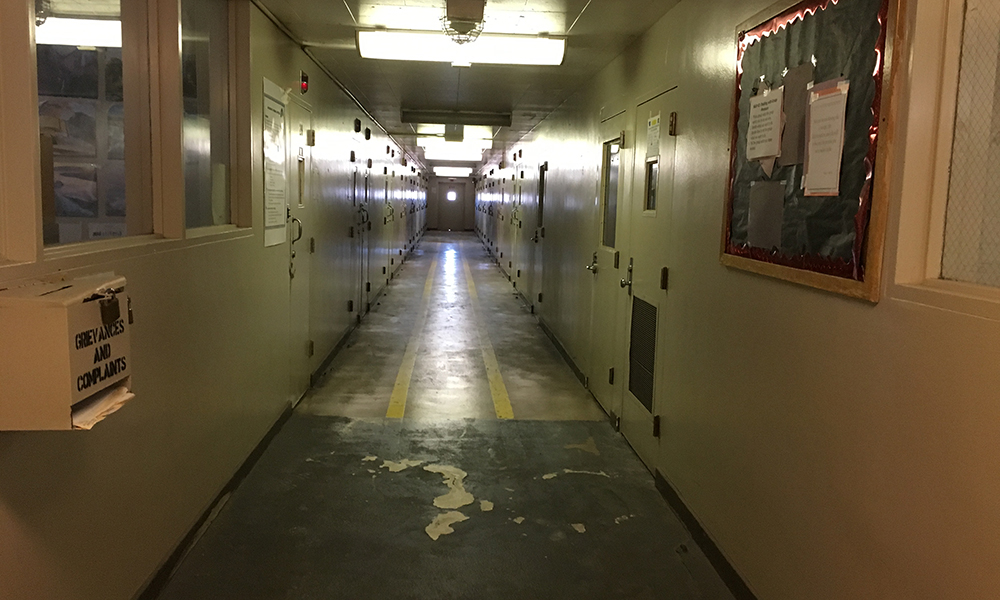California sees itself as a stronghold of progressive ideals, yet it has failed to address pervasive isolation and violence in its state-run youth correctional institutions. The state lags far behind others in a critical area of juvenile justice reform: shifting away from antiquated youth institutions that return youth to their communities with layers of trauma.

Maureen Washburn
Many states, including Massachusetts, Hawaii and Missouri have closed or radically transformed their state-run youth institutions, opting instead to place youth in small, close-to-home settings that conform to best practices. They recognize that improving youth outcomes and upholding their rights requires deeper structural change. Meanwhile, California continues to invest more than $200 million taxpayer dollars annually in its state institutions, despite evidence that the facilities are failing California’s youth.
The Center on Juvenile and Criminal Justice recently released a comprehensive report on conditions at California’s Division of Juvenile Justice (DJJ) in the three years since the end of a major conditions lawsuit against the institution. The report finds severe deficiencies across all aspects of life in the facilities, guiding readers from the intake process through youths’ daily lives at the DJJ facilities to their return to the community. The failures highlighted in this study point to a lack of accountability and inherent flaws in DJJ’s correctional model, which have clear policy implications for the state.
As co-authors of this report, we investigated conditions in the facilities through data requests, tours and interviews with youth, staff and families. We sought to place the voices of youth at the center of our report and shed light on their experiences inside the institutions. These interviews confirmed key themes from our research, making clear that DJJ facilities are violent, isolating and inherently ill-suited to prepare youth for reentry.
Facilities governed by culture of violence, fear

Renee Menart
Nearly every youth we interviewed could describe either witnessing or experiencing a riot, violence in school or harm by staff. Across a number of interviews, we learned that DJJ staff encourage violence and gang conflicts, even pressuring youth to fight one another.
These accounts align with DJJ’s own statistics, which show that rates of violence in the institution are high and rising. Beatings, fights and riots affect nearly every young person during their stay in DJJ facilities, with approximately 33 youth for every 100 in the institutions involved in a violent incident each month. We also learned that the number of youth attempting suicide has increased in recent years, and use of force by staff is almost three times higher today than it was three years ago. In fact, the school area in one of DJJ’s facilities reported the eighth-highest number of staff use-of-force incidents in all of California’s Department of Corrections and Rehabilitation — a system that includes both youth and adult prisons.
With pervasive violence at DJJ, youth describe feeling fearful when walking around the facilities or simply attending school. When they return home, they suffer from anxiety, insomnia and hypervigilance. Justice-involved youth are already more likely than their peers to have experienced traumatic events, and placement in a prison-like facility exposes them to additional trauma, leaving deep psychological impacts.
Youth are isolated during their confinement
A youth’s experience at DJJ is largely defined by isolation, both from healthy social interaction within the facilities and from loved ones on the outside. Youth spend significant time each day in locked cells, including during waking hours, and are frequently subject to lockdowns that prohibit free movement and limit access to programming and education.
The large, prison-like facilities where they are housed are located in remote areas of the state. About half of youth at DJJ facilities come from counties more than 100 miles away, which makes it difficult for youth to maintain close connections with the family members, friends, mentors and community resources they will need most when they are released. Loved ones face numerous barriers to visitation, including restrictive policies, lack of access by public transit and high costs of transportation. We heard time and again about families who could only make the trip a couple of times or not at all during the years their child was confined at DJJ.
When we spoke to young people, they told us that one of DJJ’s greatest human costs is its isolation from families and support networks back home. Families and communities are a key source of strength for young people when they are confined in a juvenile facility, but that is something that DJJ, with its hundreds of millions of dollars, cannot provide.
State system fails to prepare youth for their release
“Treatment behind razor wire” delivered in correctional facilities far from youths’ communities fails to translate to the real-world context that youth encounter when they are released. At DJJ, the few available treatment programs are led by custody staff — those who are tasked with maintaining order and security in the facilities, who generally have a background in corrections rather than relevant areas such as psychology or youth development. Programming is often a perfunctory practice in which staff members quickly recite a prompt to a group of disengaged young people. One youth we spoke to said, “It has nothing to do with the challenges we face on the outside.”
Education at DJJ is equally troubling. The agency’s schools are failing to provide a basic high school curriculum, and offer even fewer learning opportunities for graduates. The youth we spoke with described their schoolwork as “a joke” with low expectations from teachers and classes that are frequently interrupted by fighting. The school’s 2018 standardized test scores, which show less than 10 percent of youth proficient in reading and zero proficient in math, underscore this lack of rigor in DJJ’s educational programs.
For more information on Re-entry, go to JJIE Resource Hub | Re-entry
When youth are released from DJJ, they struggle to adjust to life outside a secure institution. A youth explained, “When I came out, I was different. I couldn’t have conversations with people, even with my family. I felt cut off because they isolate you.” Some youth felt institutionalized after release — even opening their own door or going to the bathroom without asking permission felt unfamiliar to them.
DJJ’s high rates of recidivism reflect the challenges of returning home after years in a violent and isolating institution. Within three years of release, 74 percent of youth are rearrested, 54 percent are reconvicted and 37 percent return to state correctional facilities. Further, most youth are not able to connect with employment or education in the months after they return home.
Structural change necessary to support youth
The problems at DJJ persist without the oversight of an independent monitor. Instead, the state maintains a patchwork approach to monitoring that endangers youth and leaves state lawmakers and members of the public in the dark when it comes to conditions at DJJ facilities. With little accountability or transparency, youth and staff feel pressured to stay silent when incidents occur in the facilities.
States such as Illinois and New York are far better aligned with best practices. These states retain independent monitors, including governmental and nongovernmental organizations, that regularly inspect and report on facility conditions to ensure the proper care of youth in their juvenile justice facilities. In contrast, amid ongoing reports of violence and abuse, California has no designated nongovernmental organization or independent agency to inspect the DJJ facilities and issue reports.
This year, through promising budget discussions and a bill to reverse the financial incentive to commit youth to DJJ (Senate Bill 284), California leaders have the opportunity to make much-needed progress in supporting youth and their families. With falling rates of youth arrest, a shrinking pool of youth eligible for DJJ and a surplus of beds in local, close-to-home facilities, California must heed the example of states across the country and take steps to shutter its dangerous youth prisons. Only by listening to youth impacted by the current system and working collaboratively to address the needs of our communities can we transform the state’s system from one of punishment and trauma to one of healing and justice.
Maureen Washburn is a member of the policy and communications team at the Center on Juvenile and Criminal Justice.
Renee Menart is a communications and policy analyst with the Center on Juvenile and Criminal Justice in San Francisco.

My husband was there back in the 90s when it was CYA. He graduated to state prison with a life sentence like most that went to CYA in the 90s. It was bad back than and it had determental results for youth. I am tripping out that it still sounds the same. Thank you for investigating this!! how can we help or what can we do about this?
Hi Lia, thank you so much for your heartfelt response. We shared the same shock that the institution’s scandalous trends have persisted all these years. CJCJ and other advocates are continuing to raise awareness on the issues and push for change.
As we work to shift California’s policies in the direction of rehabilitative supports and community-based alternatives to confinement, your support would be very helpful. This could be as simple as sharing the report’s findings or letting your representative know you support Senate Bill 284 as it moves through the legislature.
If you are interested in being more engaged, I would happy to continue the conversation. You can find our contact information on cjcj.org and we can connect. Best wishes to you and your husband.